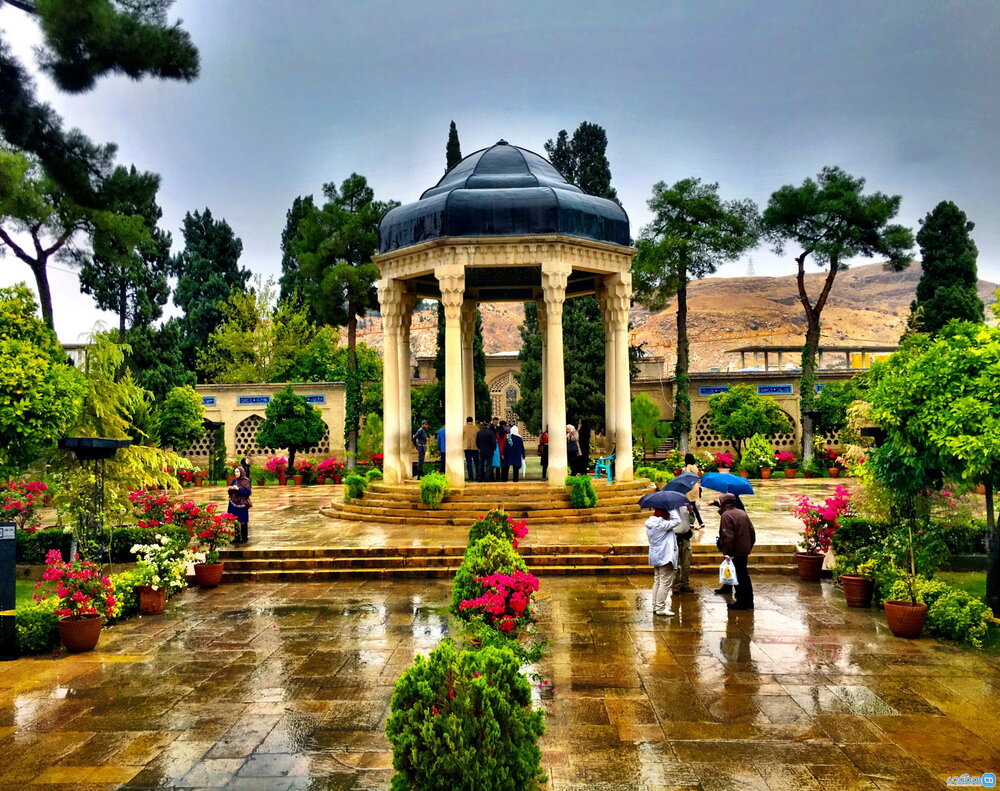Introduction
Khwāja Shams-ud-Dīn Muḥammad Ḥāfeẓ-e Shīrāzī (c. 1315–1390 CE), universally known as Hafez, remains one of Persia’s most beloved and studied poets. His ghazals—short, lyrical poems built around a recurring rhyme and refrain—condense layers of meaning into elegant, tightly-wrought stanzas. Readers across centuries have found in Hafez’s verses both the ecstasy of divine union and the pleasures (and follies) of earthly life. In this post, we’ll explore how Hafez weaves together themes of love, spirituality, social critique, and linguistic play to create poems that reward close reading—and resist any single, definitive interpretation.
The Ghazal: Form as Framework
A classical ghazal consists of:
-
Matlaʿ (opening couplet): Both lines end in the same rhyme and refrain.
-
Maqtaʿ (closing couplet): Often contains the poet’s pen name (“Ḥāfeẓ”), adding a personal signature.
-
Radīf (refrain): A repeating word or phrase that anchors each couplet.
-
Qāfiyah (rhyme): The rhyming syllable preceding the radīf.
By adhering to this rigid structure, Hafez channels a tight musicality while granting himself freedom within each couplet to shift tone—from spiritual longing to sly satire—without disrupting the overall harmony.
Layers of Meaning
1. The Sacred and the Profane
At first glance, Hafez’s frequent references to wine, tavern, and beloved may read as straightforward celebrations of worldly pleasures. Yet in Sufi symbolism, wine often represents divine love, the tavern the heart’s sanctuary, and the beloved the Presence of God. This duality invites readers to ponder: is the poet describing an earthly gathering, or an ecstatic state of spiritual transcendence?
2. Social and Political Subtext
Writing under the turbulent reign of the Marinid and Muzaffarid dynasties, Hafez veils subtle critiques of hypocrisy—especially within religious and political elites—in playful couplets. For instance, he might mock a self-righteous cleric who denounces the wine-bearer, while the reader senses a deeper warning against those who use piety to enforce power.
3. Wordplay and Allusion
Hafez’s mastery of Persian (and his familiarity with Arabic) allows him to layer puns, echoes, and classical references:
-
Double entendre: The word shawq can mean both “yearning” and “cup,” blurring desire for the beloved with longing for wine.
-
Allusive depth: A single name—Shamshīr (sword)—might invoke legendary heroes, spiritual cleansing, or political violence, depending on context.
Close readers relish the moment when a seemingly simple line—“My heart is a cup, and the tavern’s keeper my guide”—unfurls into multiple resonances.
Reading Hafez Today
Navigating Ambiguity
Part of Hafez’s enduring allure lies in his refusal to pin down meaning. Translators and scholars often offer commentaries alongside their renderings, inviting readers to choose among possible interpretations. This openness transforms each reading into a personal encounter: the poem means what the reader brings to it—and also what it reveals to them.
The Practice of Fal-e Hafez
In Iran, it’s common to perform fal (divination) with a collection of Hafez’s poems. One closes their eyes, opens the divan at random, and reads the first ghazal that greets them—seeking guidance for personal matters. This living tradition underscores how Hafez’s words continue to speak into individual lives, centuries after they were penned.
Conclusion
Hafez’s ghazals stand at the intersection of form and freedom, requiring attentive reading even as they celebrate the ecstatic dissolution of boundaries. Whether approached as mystical allegory, social commentary, or pure aesthetic pleasure, each couplet offers a world of possible meanings. To read Hafez is to embrace ambiguity—and to discover anew how poetry can hold vast depths within the smallest compass.





